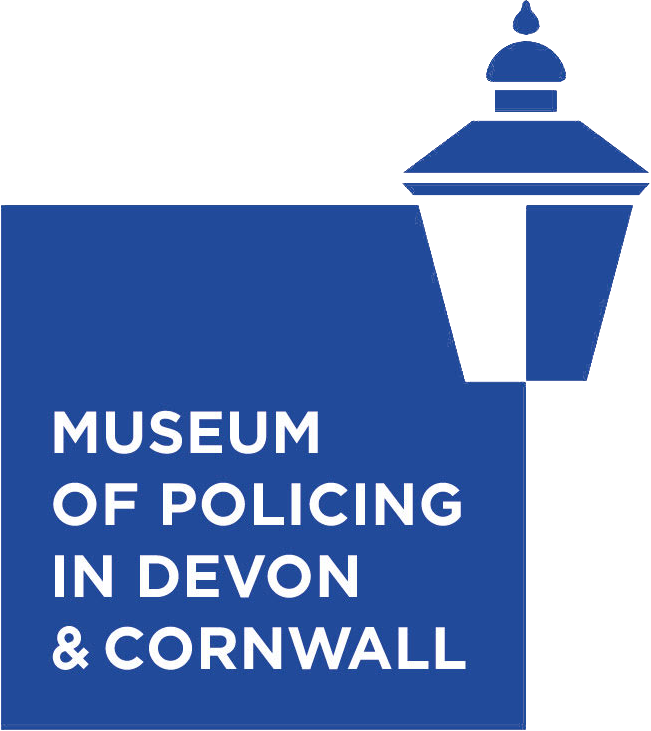Truncheon & Tipstaff Gallery
The Redruth Constable Tipstaff
The Redruth (Cornwall) tipstaff was issued to a Constable as his ‘badge of office’. At the time there was no uniform as such, and the crown topped tipstaff signalled the constable’s authority. However, in 1842, there was a need to have a properly paid policeman and the parish continued with handing out the tipstaff to the appointed constable.
Made of wood, this example is topped with a beautifully carved crown. The size of the tipstaff from bottom of handle to the top of the crown is 40 centimetres. Sign written paintwork, two parts lengthways of ‘Constable’ and ‘Redruth’ above the turned handle as well as two parts widthways ‘VR’ and ‘1851’. Painted crown and may have once been gilded.
The VR indicates that Queen Victoria was the monarch and the date 1851. The Queen was in her 14th year of rule when this tipstaff was made. In this year the United Kingdom Census included more detailed information about people than ever before, including birth date and occupations.
There were three parish appointed Constable’s at Redruth in 1851, the longest serving being Charles Tregonning/Tregoning(1842), then Martin Williams (1843) and finally Thomas Hodge (1849) and this tipstaff would have been carried by one of them. On older parish tipstaves the crown top would have been removable so that warrant documents could be carried inside it. This example does not have a removeable top.
It would have been used as a weapon in the case of subduing violence when making an arrest, and was visual proof of the constable’s duty and authority.
The Roche Truncheon
The Roche (Cornwall) ‘baluster’ style truncheon - following the Parish Constable Act 1842 a constable was appointed by the Vestry (parish and local magistrates). This was a poorly paid post because it was considered ‘easy’ and it was expected that the constable would continue with his normal employment. This truncheon may have been presented to the first constable employed under the new ‘Act’ as it is dated 1843. At present there is no name or record found regarding who may have been presented with or used this object.
Made of wood, the spindle with large headstock shows turning marks which indicate that it was probably turned by a local craftsman. The size of the truncheon from bottom of long handle to the top post is 35 centimetres. The painting is not quite as skilled as some other examples in the collection although Roche Parish can be clearly seen on the headstock, as are the 15 bezants of the coat of arms for the Duke of Cornwall. The other side of the headstock shows VR and the date 1843, all painted in red and there may have been some gilding.
In 1843 Queen Victoria was in the sixth year of her reign and Sir Robert Peel the ‘father of modern policing’ was prime minister for the second time. Roche was known for its tin and china clay, however, despite such rich deposits food was becoming expensive and scarce due to poor harvests.
A visit to Cornwall by the author Charles Dickens, and what he witnessed there helped to inform his classic story A Christmas Carol released in December 1843.
The South Brent Truncheon
The South Brent (Devon) is a ‘baluster’ style truncheon dated 1835. It may have been handed to the appointed paid police officer following a parish ‘vote’ as enabled by the 1833 Lighting and watching Act. That police officer would have taken charge of any parish constables at that time or been the constable himself.
Made of turned, stained and polished wood, the size of the truncheon from the bottom of the long handle to the bulb top is 45 centimetres. Although the paintwork is very worn the date and the person to whom the authority was given can be seen as J. Cumming. There is gold paint / gilding still in evidence with the St. Edward’s crown, WR IIII, and constable’s name all hand painted in black on top of it.
In 1835 King William IV was in the fifth year of his reign and had appointed the man known as the ‘father of modern policing’, Sir Robert Peel as prime minister the previous year. The King gave Royal Assent to the Municipal Corporations Act of 1835 which required the formation of police force in towns and cities that had oversight from a Police Watch Committee.
South Brent is a village on the edge of Dartmoor, Devon. James or John Cumming was probably a local yeoman (freehold farmer) and being the parish constable would have been an additional responsibility to his day-to-day responsibilities.
Sources used for information in the Truncheon & Tipstaff Gallery with thanks:
Alan Cook at www.truncheon.org; British Police History; Ancestry; Cornwall OPC; Kresen Kernow; Erland Fenn Clark; Mark Rothwell; Wikipedia


Post your own comment